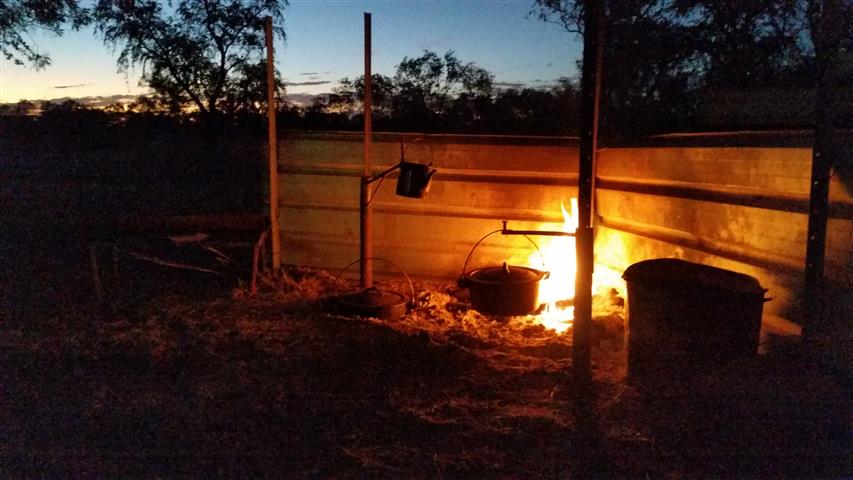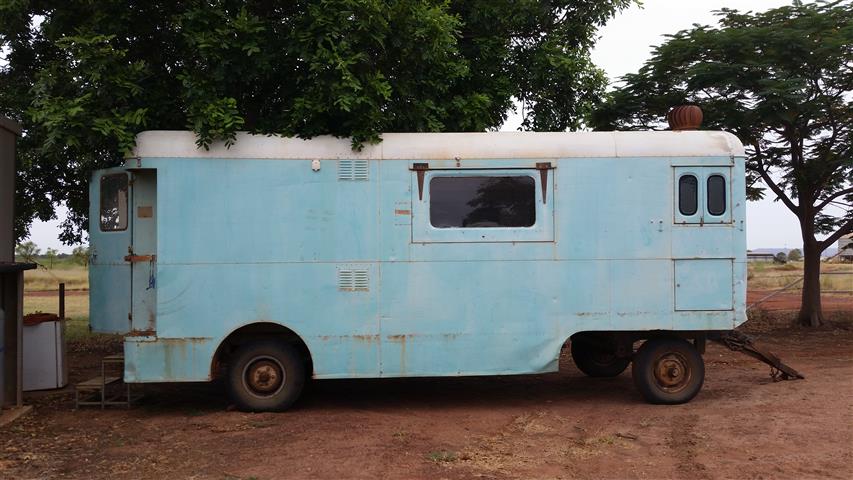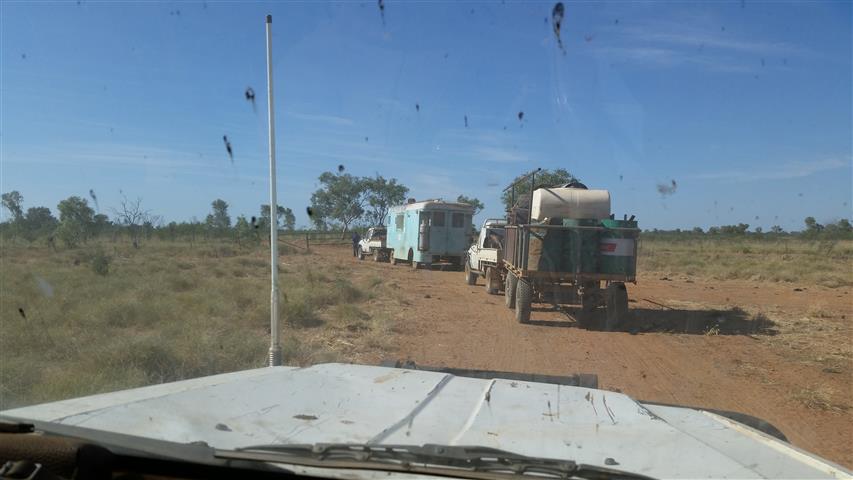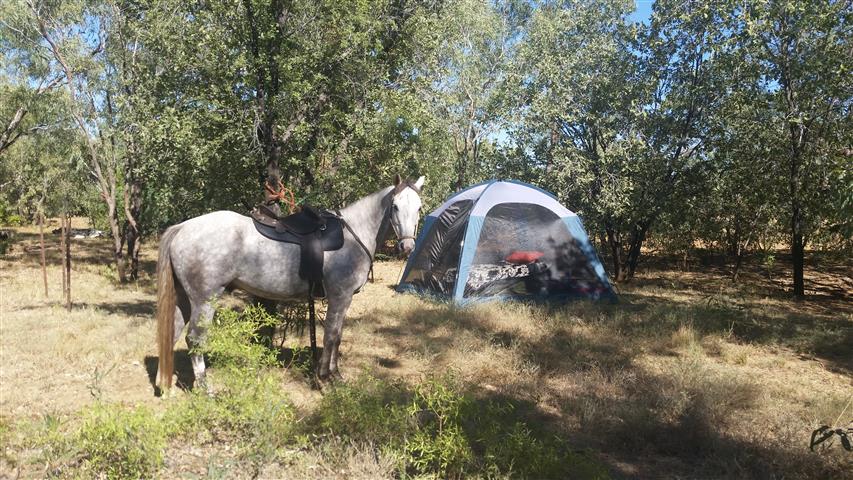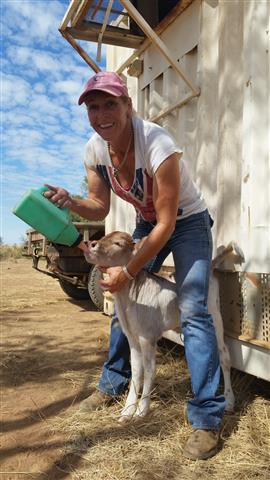Feeding the masses
Host: Liveringa Station
Written by Linda Cossor – Station Cook, Liveringa Station.
On average, our cook has 21 mouths to feed every day.
That, however, doesn’t include the three pilots that we forgot to mention were coming tonight, the vet who’ll be here for three days, the ringer’s parents who are up for a visit, the contracting plumber/electrician/welder, the three truck drivers, the stock inspector, the sales reps, the Elders agents, our GM who is up for the week, or the local police officers who might also pop in for tea on a Friday night!
With a cropping program as well as the cattle management program, we tend to have a lot going on here at Liveringa Station, and subsequently a large staff. We have two amazing cooks who take care of the catering for all our ‘casuals’ (seasonal workers) and visitors. Sue runs the main kitchen here at Inkata (the residential/working base at Liveringa). We also have Linda who has been our stock camp cook this season – she cooks for the ringers (station workers) when they head out to “stock camp” for several months of the year.
Cooking out at stock camp is a bit different to cooking in a well-resourced “normal” kitchen, so we asked Linda to share her story . . .
– Karen
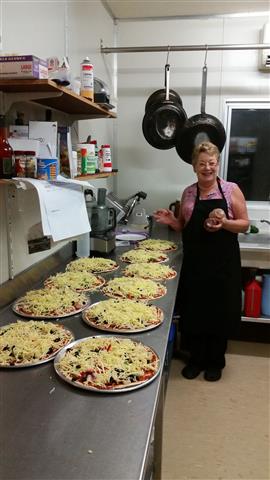 This is Sue preparing for a typical Friday night meal. All the permanent staff/families and often other visitors head to the “Rec Club” on a Friday for Sue’s awesome dinner!
This is Sue preparing for a typical Friday night meal. All the permanent staff/families and often other visitors head to the “Rec Club” on a Friday for Sue’s awesome dinner!
My name is Linda Cossor. I’m 47 and come from a little place called Yackandandah in North East Victoria.
Late last year I was presented with the opportunity to come to Liveringa and take up the position of stock camp cook for the season. Not really knowing what I was in for, I packed my bags and headed to the Kimberley.
For those of you who don’t know what a stock camp is; it is where the whole team go camping out for weeks at a time, mustering and processing the cattle. The reason for this is simply the vast size of the station. It is not feasible to travel back and forth to Inkata (our main residential area) on a daily basis. It takes about an hour to get out to stock camp.
I arrived amidst the business of preparing for the mustering season. Horses to be run in – many not ridden or touched since last year, plant equipment (vehicles, hay, trucks etc) sorted and organised, and my portable “kitchen” (otherwise known as the “Gypsy Wagon”) cleaned and packed.
. . . and so it begins. With a bag of clothes, a horse, and a swag. What more could you want?
I am awoken most mornings at 4.30am by the sound of the generator kicking in. The ringers are usually up and gone by 5-5.30am. So unless I’ve sprung out of a swag to have a cuppa with them (sometimes it happens!) I don’t see them until they come in for a hot cooked “smoko” (breakfast/morning tea) at 9.30am.
As stock camp cook, my working day usually starts around 6-7am. The first job is getting water pots on to boil for the never ending supply of dishes. I will never again take for granted the luxury of running water. I’d like to know just how many buckets of water I carted into that wagon!
I prepare three cooked meals a day – smoko served at 9.30am, lunch at 12.20pm, and dinner at 6.30pm. Besides the three meals, I try to have sweets at least three times a week, and I keep biscuits and cakes made and on hand for all the in-between times.
At the moment I’m cooking for the Head Stockman and seven ringers. That can jump up an extra two or so depending on the appearance of the boremean, vets, chopper pilots, or the road train drivers that all help in the running of this operation.
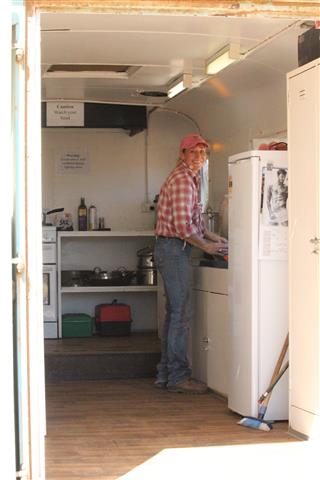 Linda hard at work in her kitchen.
Linda hard at work in her kitchen.
Cooking aside, other jobs can include feeding any poddies (orphaned calves) until someone is able to take them back to the Station to join the poddy pen there, collecting wood to light the “donkey” (fire heated bush shower), and to keep the ‘home fires burning’. I fill “nose bags” (a bag slipped over the horses head filled with grain) and feed the camp horses (horses used by the ringers – they have two or three each) when time permits. And whenever I get the chance, I help out in the yards or with walking the cattle away.
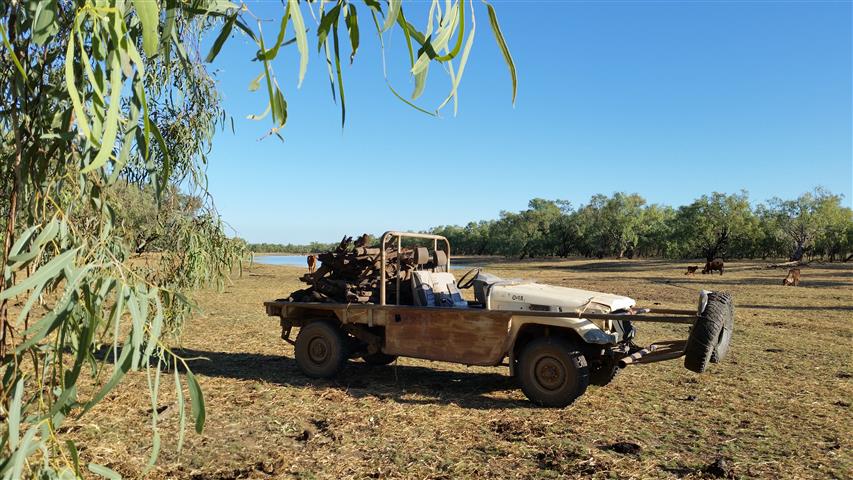 Collecting wood in the ‘bull catcher’.
Collecting wood in the ‘bull catcher’.
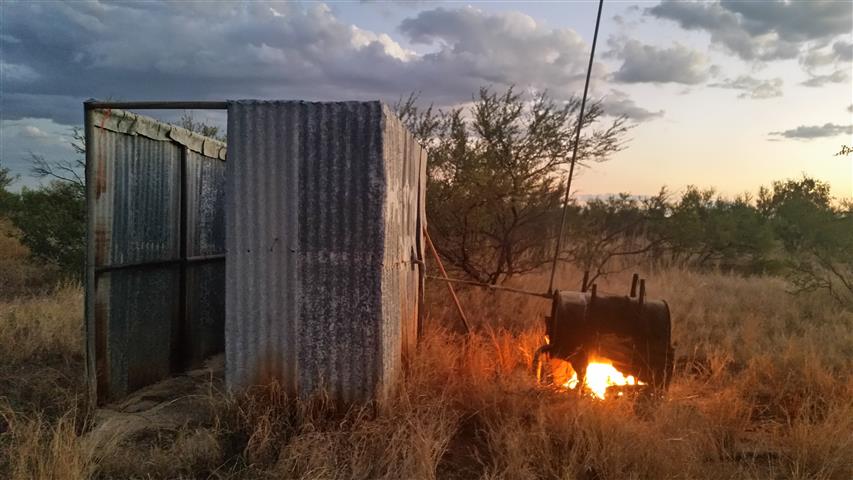 Fire lit at the donkey to heat up the water for the shower.
Fire lit at the donkey to heat up the water for the shower.
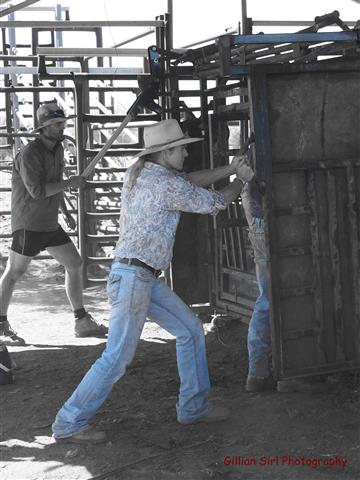
I arrived in April and will finish up at the end of September. I must say, it has been an experience; one I wish I had done years ago.
I am going to miss my little gypsy wagon, the friendships I have made, and the stories shared.
And I will miss you too Liveringa Station . . . and the laid back lifestyle of “living on Kimberley time”!
Who knows, maybe I will return one day!

